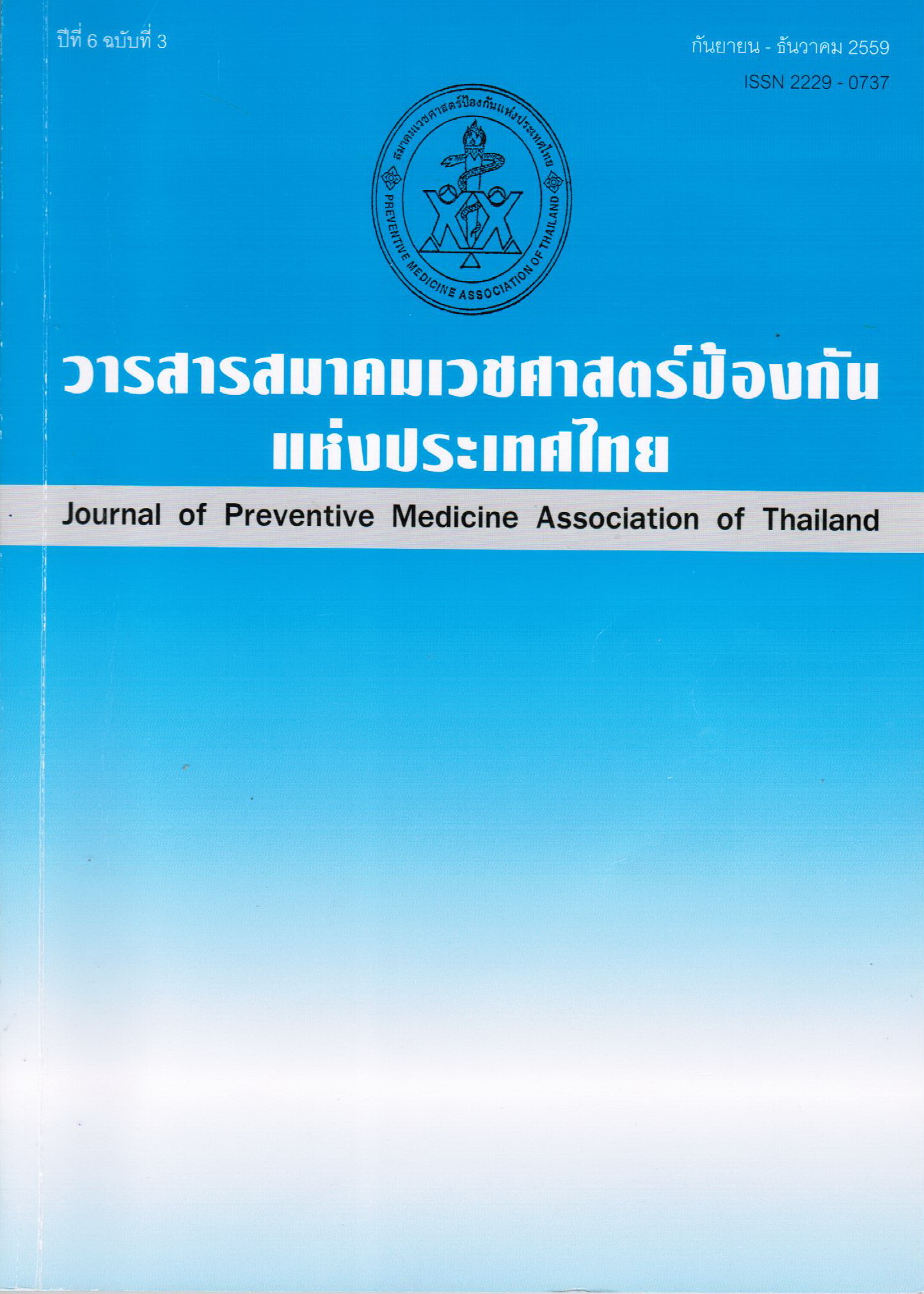Guidelines for Occupational Health and Radiation Safety In Catheterization Laboratory
Keywords:
Radiation exposure, Cardiac catheterization, Cardiac catheterization Laboratory, Occupational health and safety, Radiation protection deviceAbstract
Due to the recently growing number of patients with heart disease and the accompanying medical care requirement, the number of catheterization laboratories in public hospitals in Thailand rose from 20 to 36 in just six years. At the same time, the proportion of medical radiation overdose incidents among people receiving massive dose of radiation from Digital Fluoroscopy had increased almost three times in the past ten years. The crucial reason is that guidelines for proper use of radiation are insufficient and inadequate, including the ambiguity of catheterization laboratory specific standards. Consequently, development of occupational health and radiation safety in catheterization laboratory guidelines is necessary
References
2. กระทรวงแรงงาน. กฎกระทรวงกำหนดมาตรฐานในการบริหารและการจัดการด้านความปลอดภัยอาชีวอนามัยและสภาพแวดล้อมในการทำงานเกี่ยวกับรังสีชนิดก่อไอออน พ.ศ. 2547. กรุงเทพ: กระทรวงแรงงาน; 2547.
3. Coeytaux K, Bey E, Christensen D, Glassman ES, Murdock B, Doucet C. Reported radiation overexposure accidents worldwide, 1980-2013: a systematic review. PLoS One 2015;10:1-26.
4. อัมพร ฝันเซียน. อันตรายจากรังสีและการควบคุม [อินเทอร์เนต]. สงขลา: ภาควิชารังสีวิทยาคณะแพทยศาสตร์ มหาวิทยาลัยสงขลานครินทร์; 2547 (วันที่ค้นข้อมูล 1 ตุลาคม 2559) เข้าถึงได้จาก: https://kmcenter.rid.go.th/kcresearch/article_out/article_out_02.pdf.
5. Dewar C. Occupational radiation safety. Radiol Technol 2013;84:467-86 ; quiz 87-9.
6. Cousins C, Miller DL, Bernardi G, Rehani MM, Schofield P, Vaño E, et al. ICRP Publication 120: Radiological protection in cardiology. Ann ICRP 2013;42:1-125.
7. วิวัฒน์ เอกบูรณะวัฒน์. การป้องกันโรคจากการทำงาน [อินเทอร์เนต]. 2554 (วันที่ค้นข้อมูล 22 ธันวาคม 2559) เข้าถึงได้จาก: https://www.summacheeva.org/index_article_prevention.htm
8. Thornton RH, Dauer LT, Altamirano JP, Alvarado KJ, St Germain J, Solomon SB. Comparing strategies for operator eye protection in the interventional radiology suite. J Vasc Interv Radiol 2010;21:1703-7.
9. Lee SY, Min E, Bae J, Chung CY, Lee KM, Kwon SS, et al. Types and arrangement of thyroid shields to reduce exposure of surgeons to ionizing radiation during intraoperative use of C-arm fluoroscopy. Spine (Phila Pa 1976) 2013;38:2108-12.
10. Kim AN, Chang YJ, Cheon BK, Kim JH. How Effective Are Radiation Reducing Gloves in C-arm Fluoroscopy-guided Pain Interventions? Korean J Pain 2014;27:145-51.
11. ปรานี แก้วสิงห์, พิไลพร ฉัตราธิกุล, ศรายุทธ วงศ์เหลา, ศิรประภา บุศยพงศ์ชัย, นลินรัตน์ โททำ, พัชรินทร์ หมื่นสายญาติ, และคณะ. ปัจจัยด้านการใช้งานและการเก็บรักษาที่มีผลต่อคุณภาพเครื่องแต่งตัวป้องกันรังสีสำหรับบุคลากรสถาบันประสาทวิทยา. วารสารการแพทย์โรงพยาบาล ศรีสะเกษ สุรินทร์ บุรีรัมย์ 2556;28:131-8.
12. McCormick VA, Schultz CC, Hollingsworth-Schuler V, Campbell JM, O’Neill WW, Ramos R. Reducing radiation dose in the cardiac catheterization laboratory by design alterations and staff education. Am J Cardiol 2002;90:903-5.
Downloads
Published
How to Cite
Issue
Section
License
บทความที่ลงพิมพ์ในวารสารเวชศาสตร์ป้องกันแห่งประเทศไทย ถือเป็นผลงานวิชาการ งานวิจัย วิเคราะห์ วิจารณ์ เป็นความเห็นส่วนตัวของผู้นิพนธ์ กองบรรณาธิการไม่จำเป็นต้องเห็นด้วยเสมอไปและผู้นิพนธ์จะต้องรับผิดชอบต่อบทความของตนเอง






